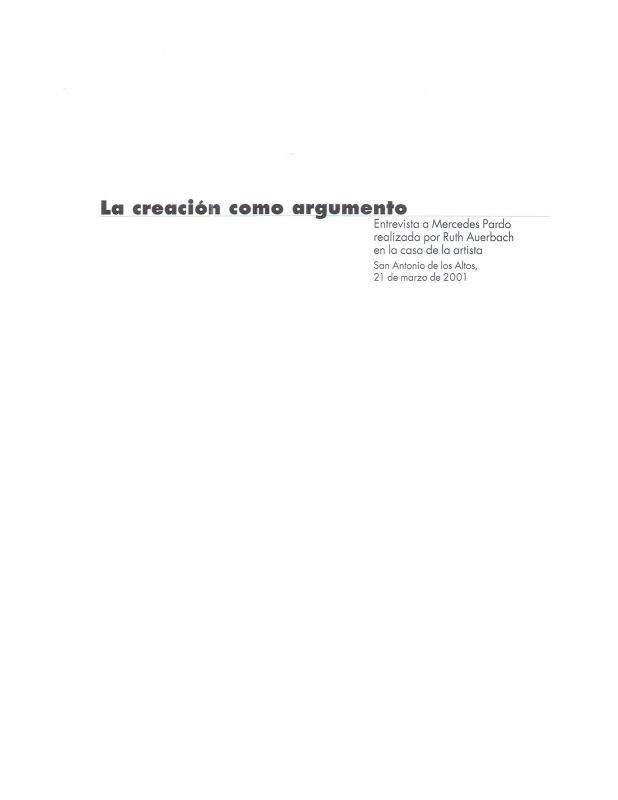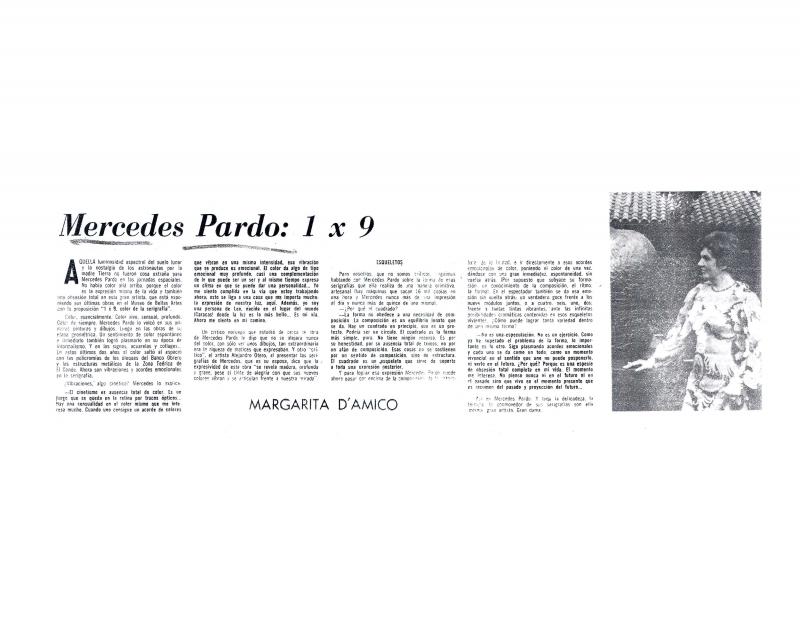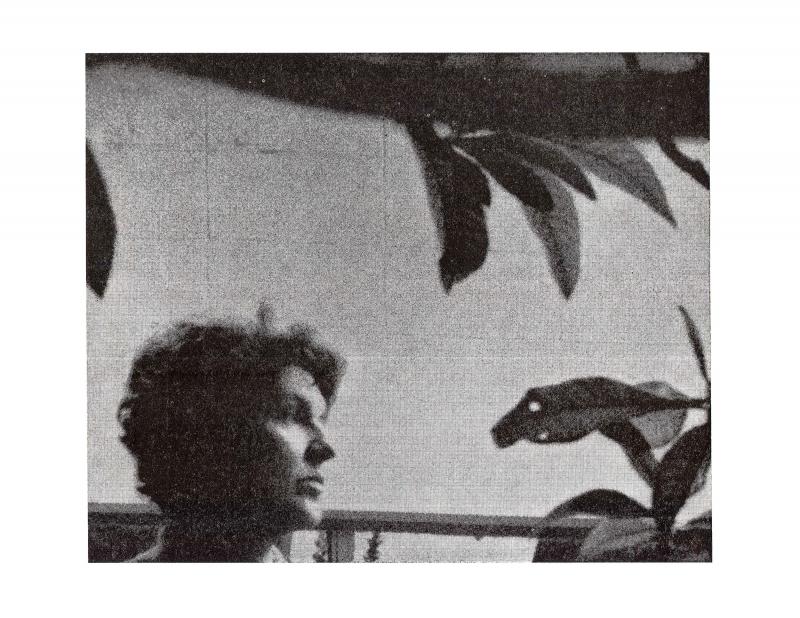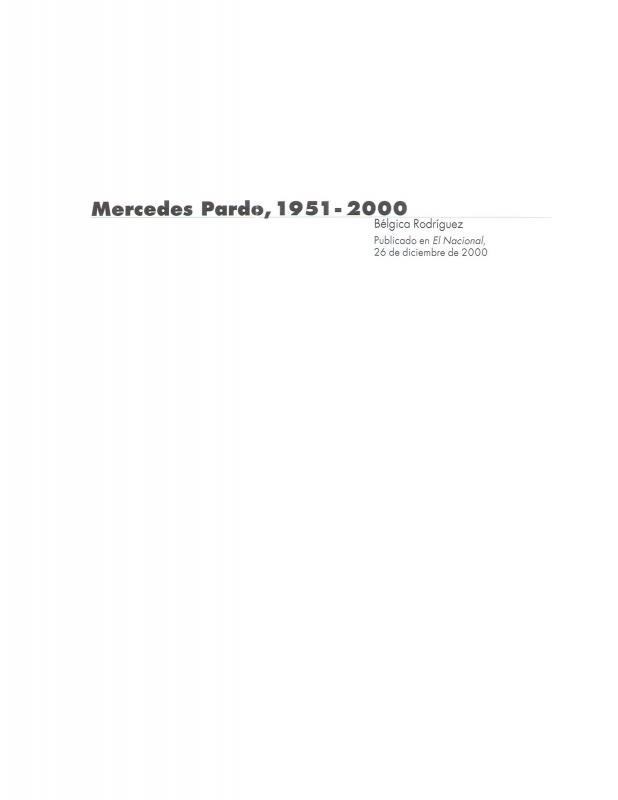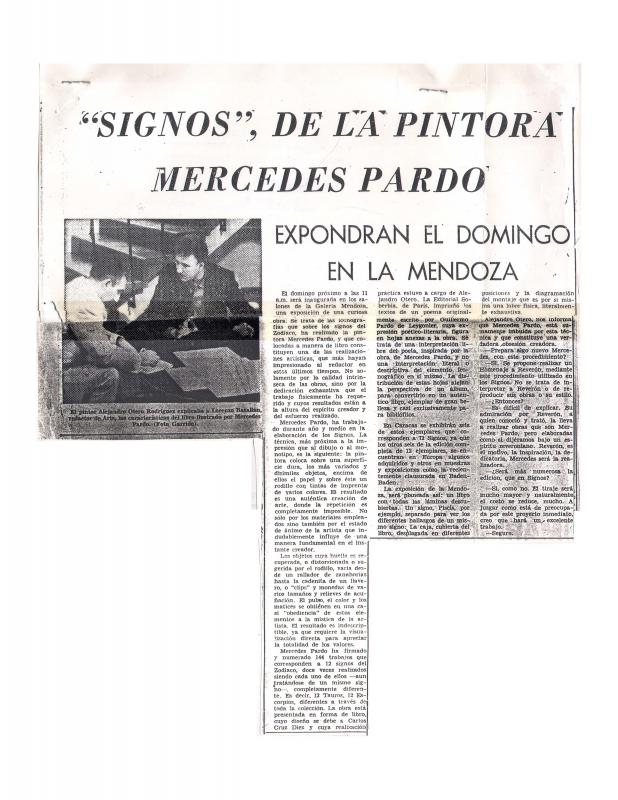The critical essay “El Espacio en la pintura de Mercedes Pardo” was published by Gloria Carnevali in the catalogue Moradas del color (Caracas: Galería de Arte Nacional, 1991), a retrospective exhibition of the work of the Venezuelan painter (1921–2005). The critic’s interest lay in providing an analysis focused on a specific visual art problem: space, the visual perception of space and its possibilities for conceptual representation. This text offers a different and therefore enriching perspective from that proposed by María Fernanda Palacios in her long essay in another catalogue Mercedes Pardo: pintura y vida. This essay is rather a monograph with biographical and contextual aspects and discussion of the history of Western Modern art, as well as providing an exhaustive analysis of Pardo’s work. Regarding the work produced by the artist, Carnevali clarifies and supplements important aspects, both formal and spatial. The writer sets forth the thesis that all Pardo’s work can be seen as an abstract type of “landscape.” Calling upon her training in philosophy and aesthetics, Carnevali rigorously analyzes the artist’s creative process, sifting through the problems of perception and the phenomenology of space. She persists until she finds the links (sometimes ambiguous) between space, color and plane that Pardo keeps creating throughout her development as an artist. She also traces a “formal genealogy” in the artist’s work over time, starting with the most basic works (in small format) rendered by Pardo in the 1950s. From there, the critic goes on to analyze the more finished and complex works the artist created in the 1960s; to Carnevali, that was a turning point in Pardo’s artistic evolution.
Although it is an essay specialized in one element of visual art language (space), this is not a reductive text with a skewed interpretation of the artist’s work. In proposing the study of the work of Mercedes Pardo “with a predisposition to recognize the spatial problems in the work,” the writer opens up other focuses on the works of this artist. While these added perspectives go beyond those offered by a single “chromatic predisposition,” they do not negate them. She has no intention of disputing the validity of studies that deem Mercedes Pardo to be the great colorist of Venezuelan art.
[Regarding this work, see the ICAA digital archive: interviews by both Ruth Auerbach “La creación como argumento” (doc. No. 1143060) and Margarita D’Amico “Mercedes Pardo: 1 x 9” (doc. No. 1155959); texts by Alejandro Otero “Mercedes Pardo: color de la serigrafía” (doc. No. 1143176) and Roberto Guevara “Color y módulos en Mercedes Pardo” (doc. No. 1155991); in addition, articles by Bélgica Rodríguez “Mercedes Pardo: 1951 – 2000” (doc. No. 1143027) and by Lorenzo Batallán “‘Signos’ de la pintora Mercedes Pardo” (doc. No. 1155975)].

